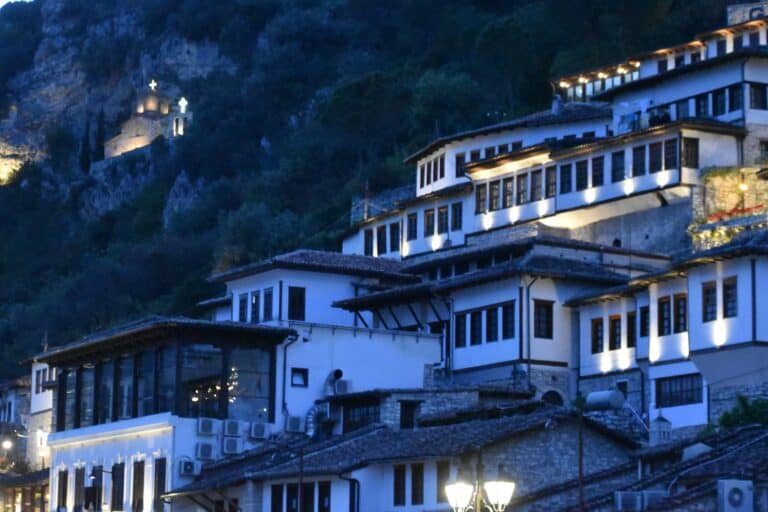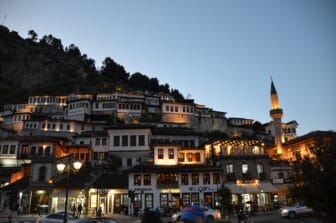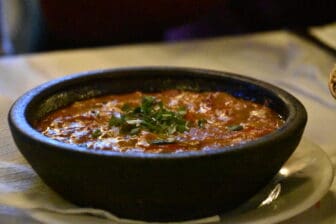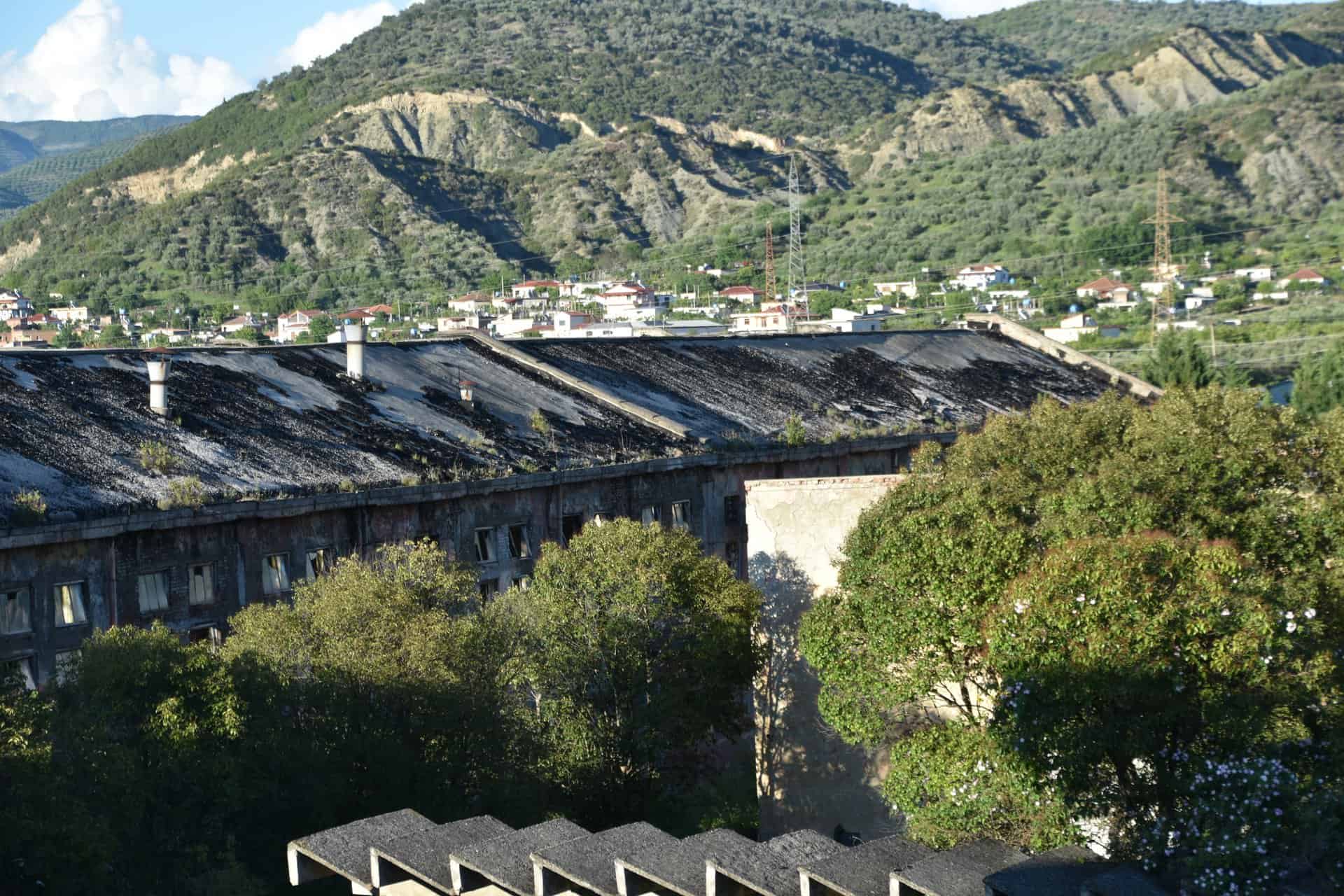Berat
Berat is one of the most beautiful and historically rich cities in Albania, often referred to as the “City of a Thousand Windows” for its distinctive architecture featuring white Ottoman-era houses with large windows climbing up the hills on both sides of the Osum River. Located in central Albania, about 120 kilometers south of Tirana, Berat is a UNESCO World Heritage Site and a symbol of the country’s cultural and religious diversity.
The city’s origins date back over 2,400 years. Known in antiquity as Antipatreia, it was an important stronghold during the Illyrian period and later became part of the Roman and Byzantine empires. The city’s long and layered history is evident in its architecture, fortifications, and religious monuments. The Berat Castle, or Kalaja, stands majestically on a hill overlooking the town. Built during the 4th century BC and reinforced over the centuries, it still houses a small residential quarter where people live today, preserving a unique medieval atmosphere. Inside the castle walls, visitors can explore the ruins of churches, mosques, homes, and a Byzantine cistern, all of which offer insight into centuries of coexistence between different cultures and faiths.
One of the most iconic aspects of Berat is the harmony between Muslim and Christian traditions. The city is home to numerous mosques and churches, some of which date back hundreds of years. The Lead Mosque, built in the 16th century, is one of the best-known Islamic monuments, while the Church of the Holy Trinity, located within the castle, is a beautiful example of Byzantine architecture. The peaceful coexistence of these places of worship in close proximity reflects the city’s historical tolerance and multicultural character.
The historic neighborhoods of Mangalem and Gorica, located on opposite sides of the Osum River, are central to Berat’s identity. Mangalem, once the Muslim quarter, is characterized by narrow cobblestone streets, terraced white houses, and traditional wooden details. On the other side of the river, Gorica—traditionally the Christian quarter—features similar architecture, with stone paths, historic churches, and a more rustic charm. The Gorica Bridge, a 17th-century stone bridge, connects the two neighborhoods and is one of the most photographed landmarks in the city.
Berat is also known for its vibrant cultural life and artistic heritage. One of its most notable figures is the 16th-century iconographer Onufri, whose works are considered masterpieces of Albanian ecclesiastical art. The Onufri National Iconographic Museum, located inside the Church of the Dormition of Saint Mary within the castle, displays many of his icons and offers a broader overview of Orthodox Christian art in the region. The museum is not only a cultural gem but also a place of deep spiritual and aesthetic experience.
In addition to its historical and cultural significance, Berat is surrounded by stunning natural landscapes. The Osum River flows through the city, offering scenic views and opportunities for rafting just outside the urban area. The nearby Tomorr Mountain, considered sacred by both Muslims and Christians, is a destination for pilgrimages and hikes. In summer, it is a popular spot for nature lovers and those seeking panoramic views of the region.
Berat is also known for its local products and cuisine. The region produces excellent wines, particularly from the Berat and Çobo wineries, as well as high-quality olive oil and fresh produce. Traditional Albanian dishes are served in the city’s many family-run restaurants and guesthouses, where visitors can enjoy home-cooked meals in authentic settings. The hospitality of the local people adds to the experience, making travelers feel welcomed and at home.
The city has made significant efforts in recent years to improve infrastructure and promote sustainable tourism. Many of its historic buildings have been restored, and tourism services have been developed with respect for the city’s architectural integrity and traditions. Today, Berat attracts a growing number of international visitors, including historians, architecture lovers, artists, and curious travelers seeking meaningful cultural experiences.
Despite the influx of tourism, Berat has managed to preserve its soul. Walking through its quiet alleys, visiting its houses-turned-museums, or attending a traditional festival offers a glimpse into a way of life that is both timeless and deeply rooted in history. The city is a living monument, where the past and present exist side by side.
Ultimately, Berat is not just a destination but a journey into Albania’s soul. It is a city of light and reflection, where every stone tells a story, and every view opens onto centuries of human experience. Whether you come to admire its architecture, to explore its history, to enjoy its cuisine, or to find peace in its mountains and riverbanks, Berat offers something rare and unforgettable. It is a place that speaks to the traveler with quiet dignity and lasting beauty, leaving behind not only memories but also a sense of connection to a deeper world.
“1000 Windows” – There’s Probably Not 1000
[Apr. 2024] On an evening tour in Berat, Albania, we went to a spot where we could see the famous “1000 Windows.” The area is characterized by a row of traditional houses built on a…
Albanian food and the view
[Apr. 2024] On this day, I ate Albanian food for the first time. We had lunch after visiting churches in Berat, a town that is a World Heritage Site. Since almost all of meals are…
The strain of a sudden rise in popularity
[Apr. 2024] We stayed at the Grand White City Hotel in Berat, Albania. The name Berat apparently comes from the word meaning “white town”. I’m sure it was the same in Belgrade, Serbia, too. The…




